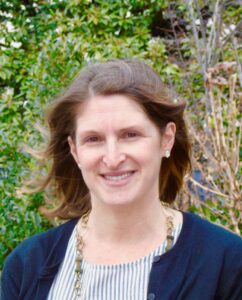How Should Schools Spend ESSER Summer School Funds? RI Case Study Has Some Clues
Kerr & Schwartz: Goals, evidence, innovate & evaluate — Woonsocket program demonstrates key elements districts should consider

Get stories like these delivered straight to your inbox. Sign up for The 74 Newsletter
Two years ago, the U.S. Department of Education released the bulk of Elementary and Secondary School Emergency Relief (ESSER) funds to state education agencies. It was the largest-ever one-time investment in the nation’s schools, and 1% of it was set aside for summer learning programs.
Research shows summer matters for kids. Studies by Rand and the Annenberg Institute found that high-quality summer learning programs can result in meaningful academic benefits, particularly in math, and can help students better connect with their schools and peers. In the face of historic declines in math scores and declines in reading, children need this summertime boost now more than ever.
With ESSER funds available this summer and next before they expire, state and district education leaders should seize this opportunity to collect data on existing summer offerings, make improvements and build evidence-based programs in jurisdictions where they do not exist.
A research brief from the EdResearch for Recovery Project can provide a roadmap, highlighting eight design principles – including program duration, attendance, use of time and quality of instruction – that matter most in creating effective programs that deliver strong academic benefits for students.
How well do these function in practice?
EdResearch for Recovery has spent the last year working with a network of school districts in Rhode Island and two in Tennessee to test whether and how evidence-based principles translate into action. This work and a deeper examination of initiatives in Woonsocket, Rhode Island show three promising steps districts can take to balance research recommendations with local needs and values.
Establish values and goals for summer learning programs. Clear values can guide decisions about research-based recommendations, and by setting and measuring progress toward goals, leaders can see how those decisions are affecting desired outcomes.
Woonsocket used three values — site-based leadership, qualified program personnel and student personalization — to guide its decisions as it evaluated evidence on what works in summer learning. It also established three goals: increase academic learning, improve connection and engagement with school, and strengthen social and emotional skills.
Know and use the evidence. Research shows students benefit when summer programs hire certified teachers with content knowledge and grade-level experience and specialized support personnel. Woonsocket made it a priority to do this and used money from ESSER to provide extra pay and flexible schedules to summer staff. As a result, while many summer programs across the country struggled to hire adequate staff, Woonsocket had more than enough teachers applying to work. These initiatives also paid dividends in teacher satisfaction. In a survey at the end of the summer, 100% of educators agreed they had enjoyed teaching in the summer program.
Similarly, following the evidence, Woonsocket invested financial resources to keep teacher-student ratios low. Families saw the benefit of small classes, with 98% agreeing that the program helped children build positive relationships with peers and 95% agreeing that it helped build positive relationships with adults. Teachers also saw the benefits. One noted, “The ability to work with students in small groups without distractions had a powerful effect on student learning.”
When innovating, also evaluate. School districts can have unique circumstances that affect their use of evidence in program design. For example, limited ability for planning, personnel shortages and families’ demands for summer flexibility can conflict with calls for greater academic rigor or more weeks of programming. Districts must evaluate the outcomes of their decisions and quickly pivot if innovations are not working.
For example, district leaders in Woonsocket worried that asking students to commit to a program with at least 20 days of instruction, as evidence suggests is needed for academic gains, would discourage enrollment. Instead, they offered three two-week sessions. This flexible registration schedule led to high enrollment and low attrition across the three sessions. Ultimately, 40% of students enrolled in enough sessions to hit the 20-day benchmark.
Woonsocket also made innovations in program administration and curriculum development. Insteading of following evidence showing benefits in centralized decision making, Woonsocket opted to prioritize empowering site-based leaders and teachers. This led to some communication challenges across the district, specifically with families receiving conflicting or confusing information about how to register students for summer programming. But the autonomy and flexibility energized Woonsocket’s teachers. In a survey, one educator noted, “I had so much fun having more freedom.” At the same time, 95% of families agreed that their child was better prepared for the next school year after attending the summer program.
No summer program will be perfect. But taking these three steps, drawn from real-world examples, can help district leaders navigate balancing research recommendations and local needs. And like Woonsocket, districts should commit to collecting and examining data to understand whether their programs are making a difference for their students.
Get stories like these delivered straight to your inbox. Sign up for The 74 Newsletter




